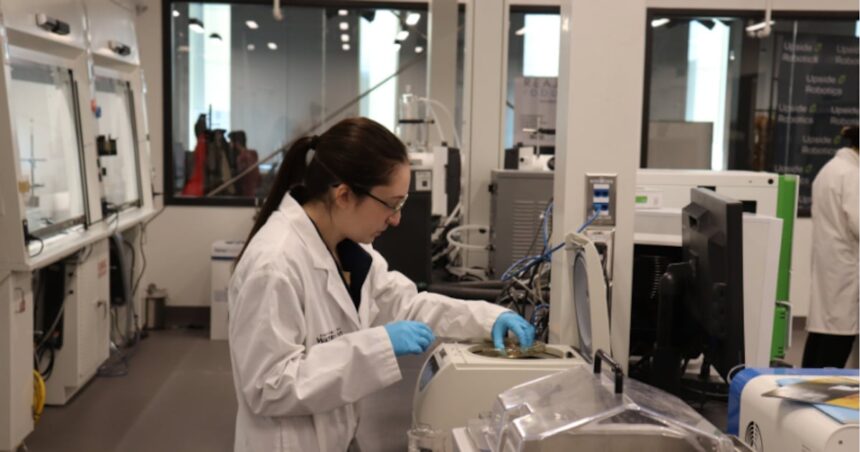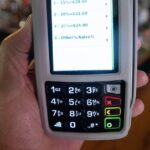I set my notebook down on the weathered picnic table, watching as Dr. Amira Saleh carefully unpacked what looked like an ordinary menstrual pad from its clinical packaging. We were meeting at a community garden in East Vancouver, an unlikely setting to discuss what might be one of Canada’s most promising healthcare innovations of the decade.
“Most people are surprised when I tell them this could save thousands of lives,” she said, holding up the unassuming white rectangle. “Especially in communities where Pap tests are difficult to access.”
The innovation Dr. Saleh and her team at the University of British Columbia have developed seems deceptively simple: a menstrual pad that can collect cells shed naturally during menstruation and screen them for early signs of cervical cancer. The project, which received $2.3 million in funding from the Canadian Institutes of Health Research last month, could revolutionize cancer screening for women in remote communities across Canada and eventually worldwide.
Cervical cancer is almost entirely preventable with regular screening and HPV vaccination, yet it continues to claim lives, particularly in underserved communities. Statistics Canada reports that cervical cancer screening rates in northern territories are up to 20% lower than the national average, with even greater disparities in some First Nations communities.
“Our healthcare system has these blind spots,” Dr. Saleh explained as we walked through rows of community-grown vegetables. “Women in rural and remote areas, those with mobility issues, cultural barriers to pelvic exams, or simply those who can’t take time off work for appointments – they’re all being left vulnerable to a disease we know how to prevent.”
The technology works by capturing naturally shed cervical cells during menstruation. Users simply mail the used pad in a pre-paid, secure envelope to a laboratory where technicians extract the cells and analyze them for precancerous changes and HPV, the virus responsible for most cervical cancers.
Emily Washburn, a community health worker in northern British Columbia who has been involved in pilot testing, joined our conversation via video call as we settled back at the table.
“I’ve seen firsthand how challenging traditional screening can be,” she told me, the connection occasionally breaking up as she spoke from her clinic in Hazelton. “For some Indigenous women, there’s historical trauma associated with medical examinations. For others, it’s the four-hour drive to the nearest women’s clinic. This gives people control over their health in a way that feels dignified and accessible.”
What struck me most as I heard from these women wasn’t just the scientific achievement, but how they approached the development process. Unlike many medical innovations that begin in labs and eventually reach communities, this project started with community needs.
“We held talking circles in 12 communities across the country,” Dr. Saleh said. “From Iqaluit to inner-city Toronto clinics. We asked women what would make cancer screening work for them. The technology followed the human needs, not the other way around.”
The results from initial trials have been promising. In a study published in the Canadian Medical Association Journal, the menstrual pad screening detected 91% of high-grade cervical abnormalities, comparable to traditional Pap tests. More importantly, participation rates in pilot communities increased by nearly 60%, reaching women who had never been screened before.
Dr. Melody Caouette, a gynecologic oncologist at Women’s College Hospital in Toronto who wasn’t involved in developing the technology, expressed cautious optimism when I called her later that week.
“This isn’t going to replace traditional screening methods overnight,” she emphasized. “But it offers another pathway to protection, especially for underscreened populations. The beauty is in its simplicity – we’re meeting women where they are in their lives.”
The project faces challenges before nationwide implementation. Health Canada is currently reviewing the technology for approval, with questions around standardization, cost-effectiveness, and integration into provincial healthcare systems still being addressed.
Cost remains a significant factor. Each test currently costs about $30 to process, compared to approximately $25 for a traditional Pap test. However, advocates argue the true comparison should include the indirect costs of traditional screening – transportation, childcare, time off work – that often create barriers.
“When you look at the big picture, including reaching women who would otherwise go unscreened, the economic argument becomes compelling,” said Dr. Saleh. “Not to mention the human cost of missing early, treatable cancers.”
As I spoke with women involved in the pilot programs, one theme emerged consistently: the psychological difference between a clinical pelvic exam and a self-collected sample. Many described feeling empowered rather than exposed.
“I missed three scheduled Pap tests because of anxiety,” explained Sarah Mitchell, a 42-year-old participant from Calgary. “With this, I just used it at home during my period. No stirrups, no stress. It sounds small, but that difference meant I finally got screened after eight years.”
The innovation comes at a critical time. The World Health Organization has called for global elimination of cervical cancer, with targets including 90% HPV vaccination coverage, 70% screening coverage, and 90% treatment for precancerous lesions by 2030. Canada has committed to these targets, though progress varies significantly across provinces and territories.
As afternoon light filtered through the garden’s maple trees, Dr. Saleh packed up her demonstration materials. She pointed to a handwritten note she keeps in her research binder – a message from a woman in Nunavut who participated in early testing.
“It says, ‘This is what respect looks like,'” Dr. Saleh told me. “That’s when I knew we were onto something that matters.”
Walking back toward the SkyTrain station, I reflected on how something as unassuming as a menstrual pad could represent such a profound shift in healthcare thinking – not just in the technology itself, but in who it serves and how it serves them.
As Canada continues developing this innovation, the real test will be ensuring it reaches those who need it most – turning a promising technology into a healthcare reality that truly leaves no one behind.






